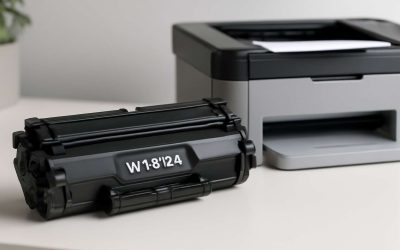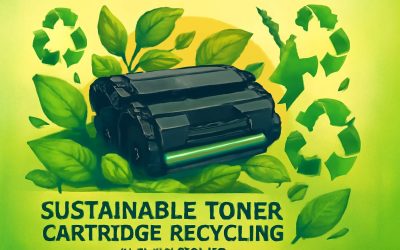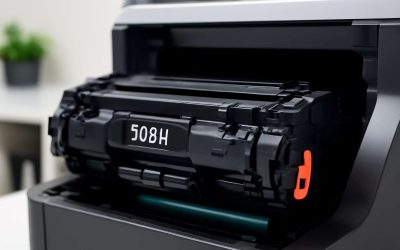
Ink cartridges are the essential component of most printers, enabling you to print crisp, vibrant color or black and white documents. They’re available at most office supply stores, computer and electronics vendors or online. Often, these cartridges also include a number that helps you identify them.
Cartridges are made from a variety of materials, including plastics and aluminum. Some, such as aluminum, can be repurposed into other products. Others, such as plastic, can be recycled and reused multiple times.
Plastics are a great choice for the casing of ink cartridges because they have a long life expectancy – between 450 to 1000 years depending on the type of cartridge you’re using (Environmental Benefits: Reuse & Recycling Ink and Toner Cartridges). They can be recycled into many different materials, such as car parts or other consumer goods.
However, the plastics used to manufacture ink cartridges are a significant source of greenhouse gas emissions, which is why some companies are working to recycle them. For example, HP is incorporating multiple sources of recycled plastics into its inkjet cartridges.
Printer ink is a liquid that is stored in the cartridge’s body and transferred to paper during printing. Generally, this ink is either pigment-based or dye-based. Dye-based ink is the most common and is used for vibrant color prints or photos. Pigment-based ink is less common and can produce crisper color but has a longer dry time.
A printhead is the component that ejects ink from the cartridge’s nozzles onto paper. It consists of a nozzle plate, a cover plate and a common ink chamber. In piezoelectric printers, it also includes a substrate that houses a piezoelectric crystal.
Each of the cartridge’s components is designed to work together to deliver consistent, high-quality results. Inkjet cartridges use thermal technology to transfer ink to the paper. This technique involves heating the nozzle plate to vaporize the ink and forcing it out of the nozzle into the paper. The thermal nozzle plate and the cover plate are usually made of metal, while the common ink chamber is usually made of plastic or aluminum.
The ink cartridge itself is also an eco-friendly product, as it’s often made from an engineering-grade polymer that doesn’t decompose as quickly as traditional plastics. It’s also easier to recycle than traditional plastic.
Printed documents are an important part of the daily lives of many people, especially college students. As such, it’s essential to ensure that the cartridges you use are environmentally friendly and made from renewable sources.
One way to do this is by choosing remanufactured ink cartridges from an environmentally-conscious company such as Office Depot. This allows you to save money and avoid landfills. You can even participate in the store’s Ink & Toner Recycling program and receive up to $2 back for each cartridge you return.
When purchasing an ink cartridge, it’s important to remember to check its page yield. The page yield is a measure of how much printing you can expect from the cartridge before it needs to be replaced. It’s typically listed on the ink cartridge’s packaging or on the manufacturer’s website.



0 Comments